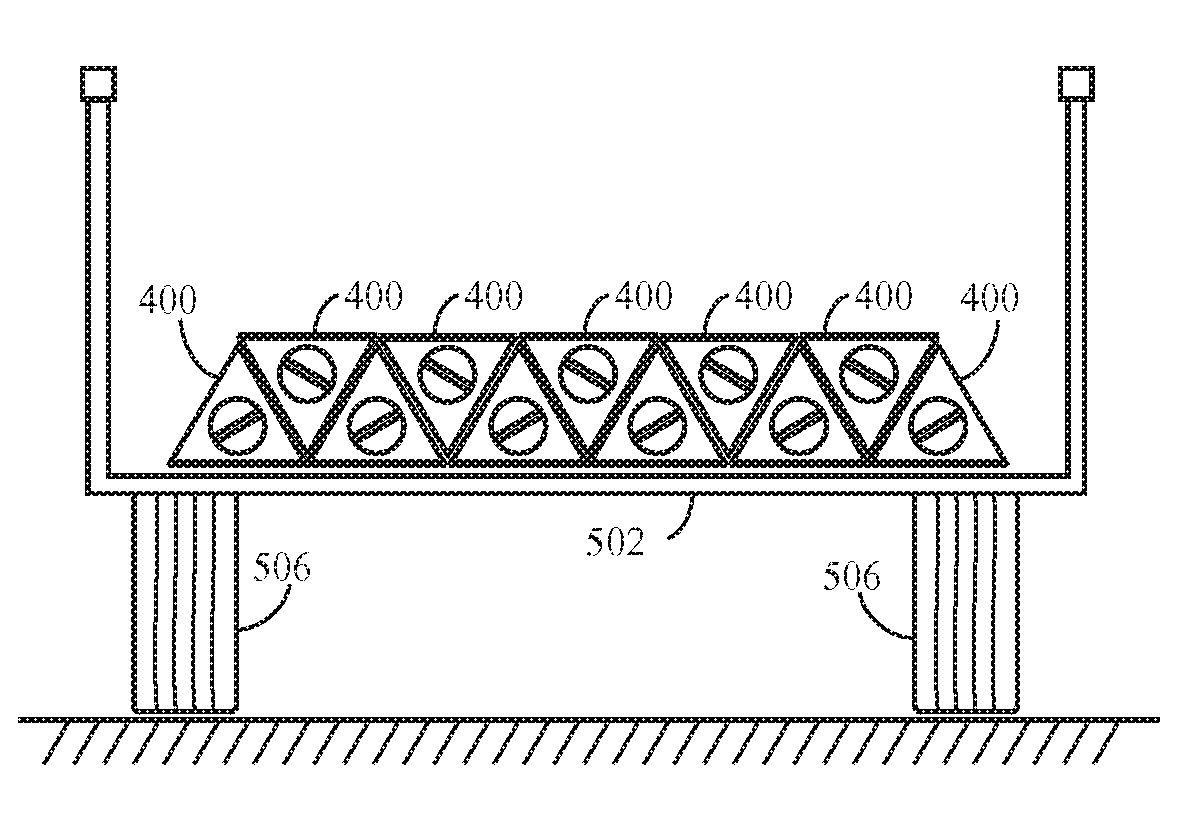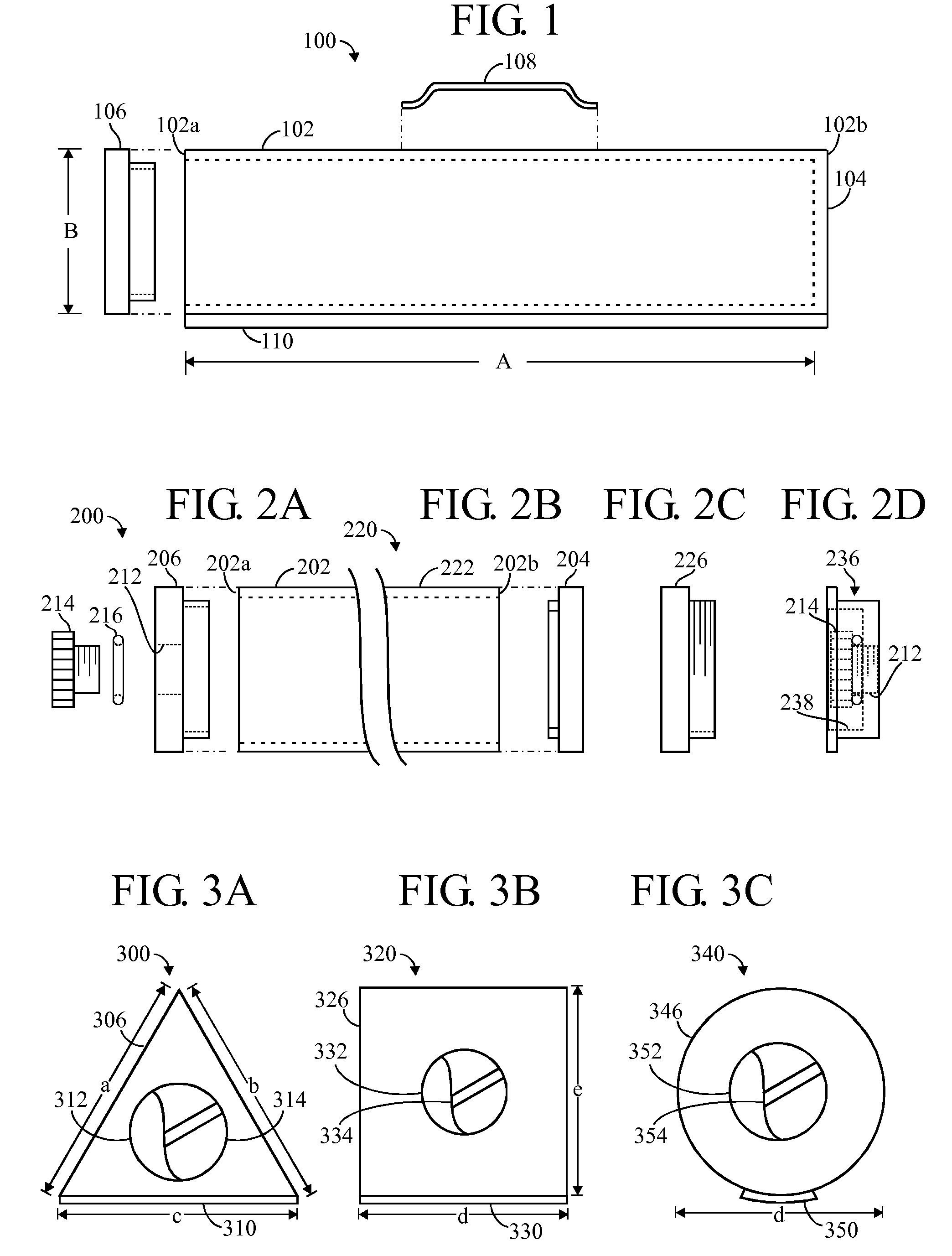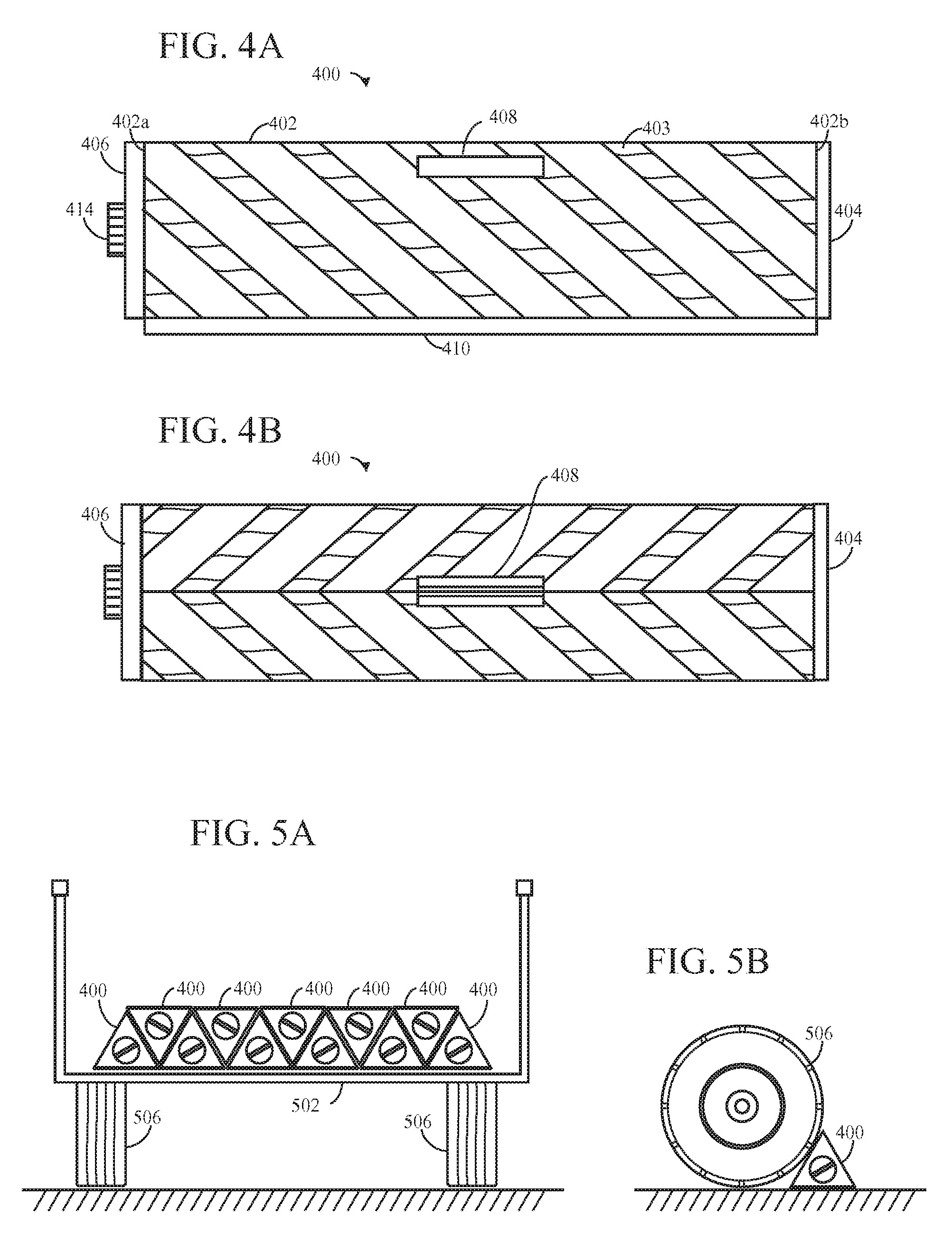Combination wheel chock and ballast weight for motor vehicles
a technology of motor vehicles and ballast weights, applied in the field of wheel chocks, can solve the problems of wheel chocks, easy to move cars or trucks, and inability to move, and achieve the effect of increasing traction
- Summary
- Abstract
- Description
- Claims
- Application Information
AI Technical Summary
Benefits of technology
Problems solved by technology
Method used
Image
Examples
Embodiment Construction
[0061]FIG. 1 illustrates an embodiment of a combination wheel chock and ballast weight 100 for motor vehicles. The apparatus 100 is essentially a container comprising elongate tubular body 102, having two opposite ends—a front end 102a and a back end 102b, a length “A”, and a height “B”. (Please note that FIG. 1 is a schematic illustration, and nothing limiting about the cross section of the body should be implied, inferred, or concluded from this drawing.) The body 102 is hollow, so that it can be filled with a flowable material (not shown) such as a liquid (such as water), or a particulate solid (such as sand or salt particles). The body may 102 may be formed of metal, or of plastic.
[0062]The back end 102b of the container 100 is shown as being closed, as indicated by the wall 104. The front end 102a of the container 100 is shown as being open.
[0063]A separate closure member (end cap) 106 is adapted to close the front end 102a of the container 100 so that flowable material may be ...
PUM
 Login to View More
Login to View More Abstract
Description
Claims
Application Information
 Login to View More
Login to View More - R&D
- Intellectual Property
- Life Sciences
- Materials
- Tech Scout
- Unparalleled Data Quality
- Higher Quality Content
- 60% Fewer Hallucinations
Browse by: Latest US Patents, China's latest patents, Technical Efficacy Thesaurus, Application Domain, Technology Topic, Popular Technical Reports.
© 2025 PatSnap. All rights reserved.Legal|Privacy policy|Modern Slavery Act Transparency Statement|Sitemap|About US| Contact US: help@patsnap.com



